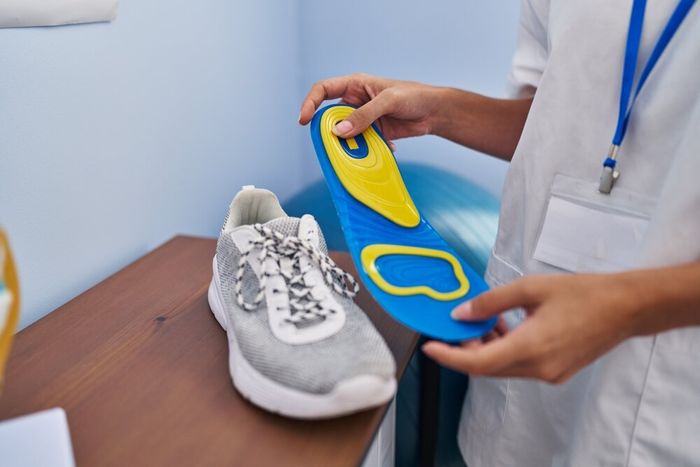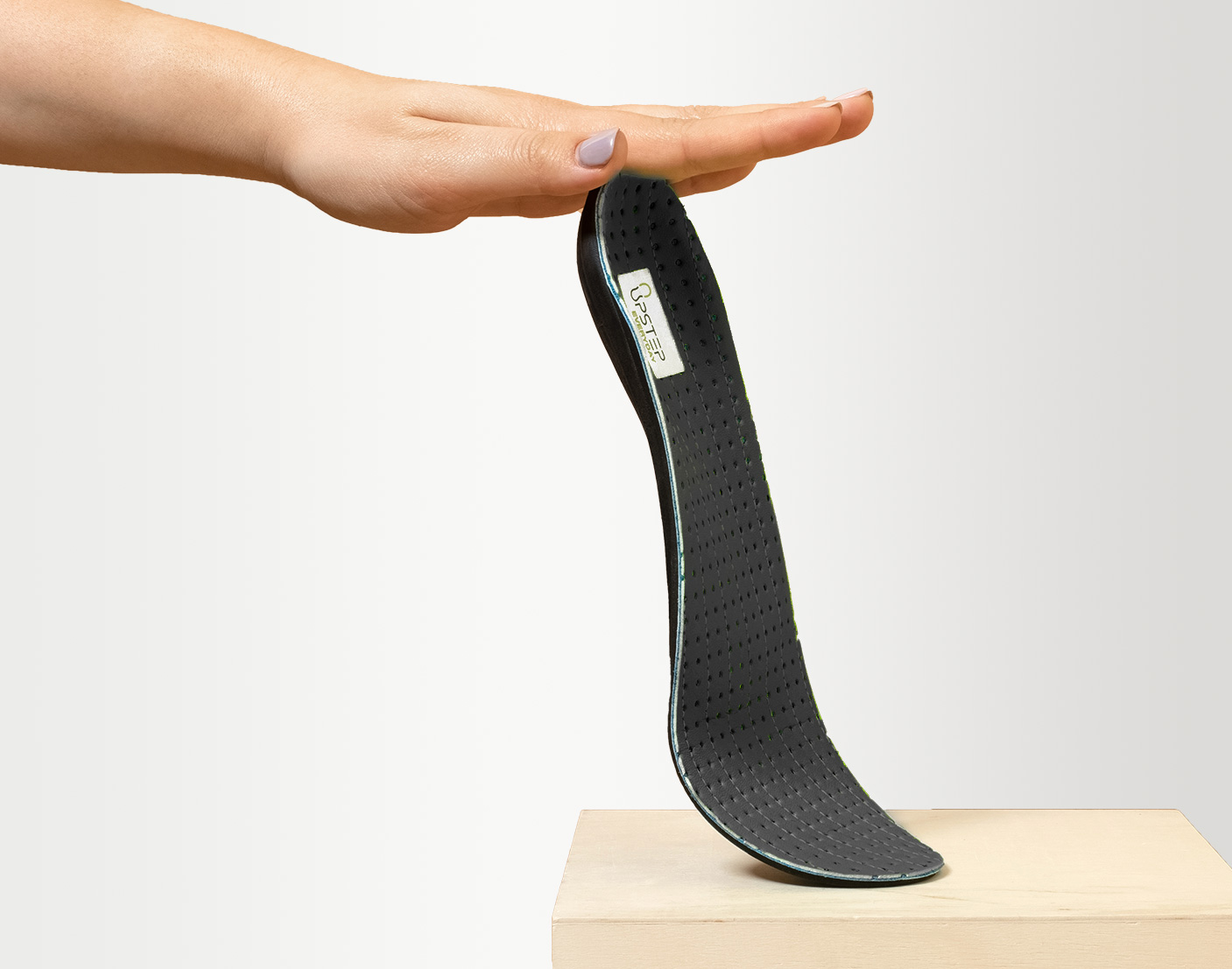Out-Toeing—Symptoms, Causes, and Treatments
Updated January 30, 2024.

Out-toeing is the outward turn of your feet away from the medial line. Also known as being duck-footed, it's common for children just learning how to walk to move in this way. Occasionally, it can also occur in adolescents and adults.
While out-toeing is typically asymptomatic and will resolve itself, sometimes you'll need external arch support to improve foot alignment, correct gait, and provide heel stability. Read on to learn more about the condition and how Upstep's Flat Feet Custom Orthotics can help.
The collapsed or low arches of flat feet give little to no support and can cause your feet to turn outward.
Out-Toeing
Out-toeing occurs because of femoral retroversion or tibial torsion—meaning your femur or tibia turns toward the outside of your leg, causing your foot to point outward too. In most cases, it's not a problem. However, out-toeing can be a sign of an underlying cause, especially if there's pain, limping, or discomfort. So, it's important to know the possible causes of out-toeing as this can also determine treatment.
Causes
Children
- Fetal position of a baby's legs in utero before birth (especially the footling breech position)
- Resting position of a child's legs during infancy
- Genetics
- Other foot conditions like flat feet
- Rare conditions like congenital bone deformity and slipped capital femoral epiphysis
Adolescents
- Hip injury e.g., hip dysplasia
- Muscle tightness in the legs or hips
- Poor posture
- Anterior pelvic tilt caused by a sedentary lifestyle
Symptoms
Generally, out-toeing is not associated with any adverse symptoms like pain and discomfort (unless there is an underlying condition).
Recognizing out-toeing is easy. Children with out-toeing tend to stand, walk, or run with their feet turned outward, making it seem like they're waddling. You may also notice their knees point outward, making walking and running clumsy and causing them to fall more often.
Treatment
Most cases of out-toeing resolve in children between the ages of six and eight. Even with adults, treating their feet may only become necessary if they're painful and it impedes physical activity performance. With severe symptoms, surgery may be necessary to correct gait deformity and neutrally align legs and feet.
It’s always recommended to seek professional medical advice regarding the best line of action. Meanwhile, wearing custom orthotics can also prove helpful.
» Experiencing discomfort in your feet? Discover the best insoles for out-toeing
The Case for Custom Orthotics
The magic of custom orthotics is that it's tailor-made for your feet, thereby addressing your foot needs and easily fitting into your lifestyle.

Custom support to address out-toeing
Add to cartIdeal for
-
Flat feet and out-toeing
FSA & HSA eligible
-
Yes
Shipping and returns
-
Free
Upstep's Flat Feet Custom Orthotics aim to enhance your foot function by providing arch support, thereby increasing stability and evenly distributing weight across your feet. Its heel-stabilizing function will help improve your foot alignment by retraining your muscles so you can walk with your feet facing forward and not outward.
These adjustments will help to ameliorate your gait and reduce the risk of injury. With additional shock absorption qualities, these custom insoles are comfortable and durable.
Pros
- Custom-made by podiatrists
- Address your foot needs directly
- FSA & HSA eligible
- 180-day money-back guarantee
- Free shipping and returns
Cons
- Short waiting period before receiving orthotics
The Verdict
While out-toeing is typically asymptomatic and can resolve itself, we recommend that you are proactive. Identifying any symptoms and causes early can help mitigate the worsening of the condition so that it doesn't eventually lead to surgery.
Custom orthotics are an effective treatment for out-toeing, especially if the underlying cause is flat feet. The custom insoles for flat feet provide the necessary arch support and heel stabilization to improve your foot alignment and address out-toeing.
» Still unsure? Read our custom orthotics for flat feet review








